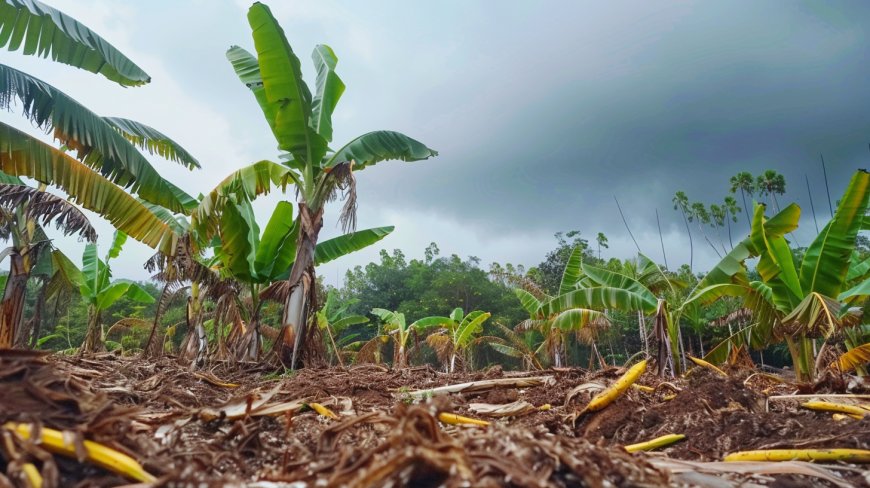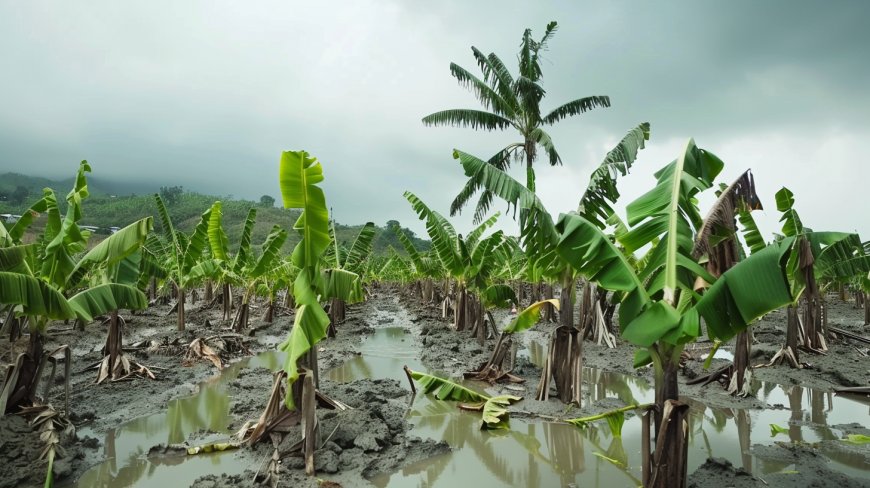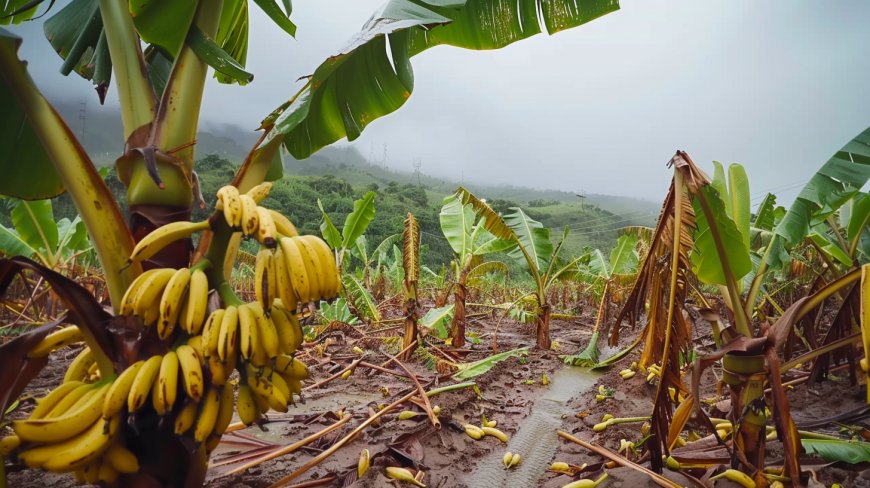Farmers Face Heartbreak After Hurricane Beryl Destroyed A Huge Percentage Of Banana and Plantain Crops

Preliminary assessments conducted by the Banana Board have unveiled significant losses in banana and plantain crops following the passage of Hurricane Beryl. The devastating impact of the storm has led to an estimated 80 to 100 percent loss in various banana-producing parishes. In this article, we will delve into the assessments conducted, the challenges faced by farmers, and the recovery measures advised by the Banana Board to help farmers bounce back from this setback.
Assessments Reveal Extensive Losses and Ongoing Evaluation:
The Banana Board has been actively assessing the extent of the damage caused by Hurricane Beryl in major banana-producing parishes including St. Thomas, St. Mary, Portland, St. James, St. Catherine, and Clarendon. Initial findings indicate that commercial banana farmers, who occupy approximately 1,564 hectares of land, have suffered staggering losses of around 90 per cent. Despite the challenges posed by limited access and communication, the Board's officers are persevering in their efforts to evaluate the losses comprehensively.

Immediate Actions to Promote Crop Recovery:
Janet Conie, the General Manager of the Banana Board, emphasizes the importance of swift action for farmers to recover from the devastation caused by Hurricane Beryl. The Board advises farmers to return to their farms as soon as possible and take necessary measures to protect the remaining crops. Farmers are urged to cover any fallen bunches to shield them from sun damage, which would render them unsellable. Given the significant damage, where plants are completely down, farmers are encouraged to leave unripened bunches attached to the plant to allow for continued development.
Effective Techniques for Crop Revitalization:
To prevent rotting sections from affecting the rest of the plant, Conie stresses the importance of "chopping up" damaged plants. This process involves cutting off broken or bent sections to promote healthy regrowth. The Banana Board has been actively sharing guidance on proper chopping up techniques through various media channels. Conie advises farmers to complete the chopping up process within two weeks of the damage to optimize the chances of a successful next crop. Additionally, if feasible, farmers are encouraged to store fruits in cold storage or ripening rooms to prolong their shelf life and maximize sales.

Maximizing Recovery and Seeking Support:
Considering the extensive recovery period estimated at around nine months, the Banana Board urges farmers to sell as much of the salvaged produce as possible. Farmers are advised to cover fruits in the field and explore selling options to minimize further financial losses. To provide additional support and guidance, the Banana Board has set up a helpline for banana and plantain farmers to seek assistance and advice during this challenging period. Farmers can reach out to the board's helpline at 876-439-9504.
The aftermath of Hurricane Beryl has left banana and plantain farmers facing substantial losses. The Banana Board's preliminary assessments highlight the severity of the damage, with commercial farmers experiencing around 90 per cent losses. To aid in recovery, the Board emphasizes the importance of immediate action, including covering fallen bunches, practicing proper chopping up techniques, and exploring sales and storage options. By following the Banana Board's guidance, farmers can work towards revitalizing their crops and mitigating the long-term impact of this natural disaster.









